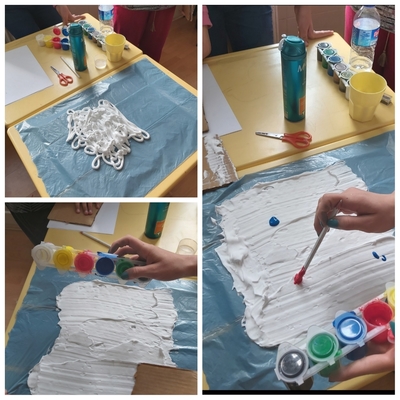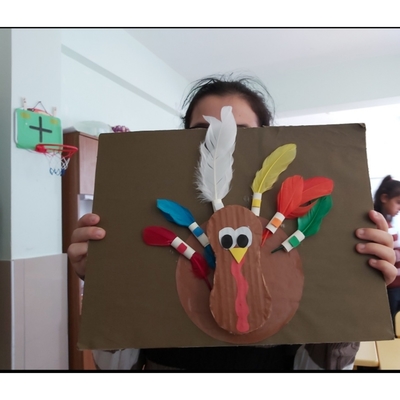LITHUANIA
WHAT DOES YOUR SCRIBBLE REVEAL?
Lithuanian educators presented the scribble method to the project participants.
Scribbles are like the drawings that children often make.
You can paint in the air, you can choose a wall instead of a canvas. Young children like to draw on a large wallpaper, holding wax crayons between their fingers and toes. It is something similar to making an angel in the snow. Drawing is also done with your eyes closed, without taking the pencil off the paper. To prevent the paper from rolling, it needs to be stuck in several places with adhesive tape or special plasticine. When your drawing is finished, you are invited to look at your scribble and search for real objects in it. Highlight the objects that you find. And then colour them in and discuss what they mean to the artist.
You can draw in different ways: with your main hand, with your non-main hand, by switching between main and non-main hands, or by drawing with both hands at once. Drawing with different hands trains both hemispheres of the brain for verbal and visual activities and contributes to the equal development and capacity of both sides of the child's body. This methodology is very useful in situations of conflict between family members, between children in a class or a group, and it is also useful when working with hyperactive children. Because while drawing in this unusual way one focuses on the drawing, the subconscious mind is less engaged and the spontaneous drawings reveal much more. The scribbles help both the artist and the observer to understand the child's attitude towards the proposed activity, the problems to be solved, relationships, etc.
Scribble therapy is very common at Litorina School. It has already been tried by pupils in Greece.
Teachers' work during the visit.

First steps for the Greek team.

Lithuanian team works.


TURKEY
The use of artistic methods to treat psychological disorders and enhance mental health is known as art therapy. Art therapy is a technique rooted in the idea that creative expression can foster healing and mental well-being.
People do not need to have artistic ability or special talent to participate in art therapy.
Art therapy focuses on a child with special needs gaining new skills while limiting environmental distractions and unproductive behavior. Children will learn to achieve new goals through action-based, dynamic educational principals and experience how important effort is over actual ability.





